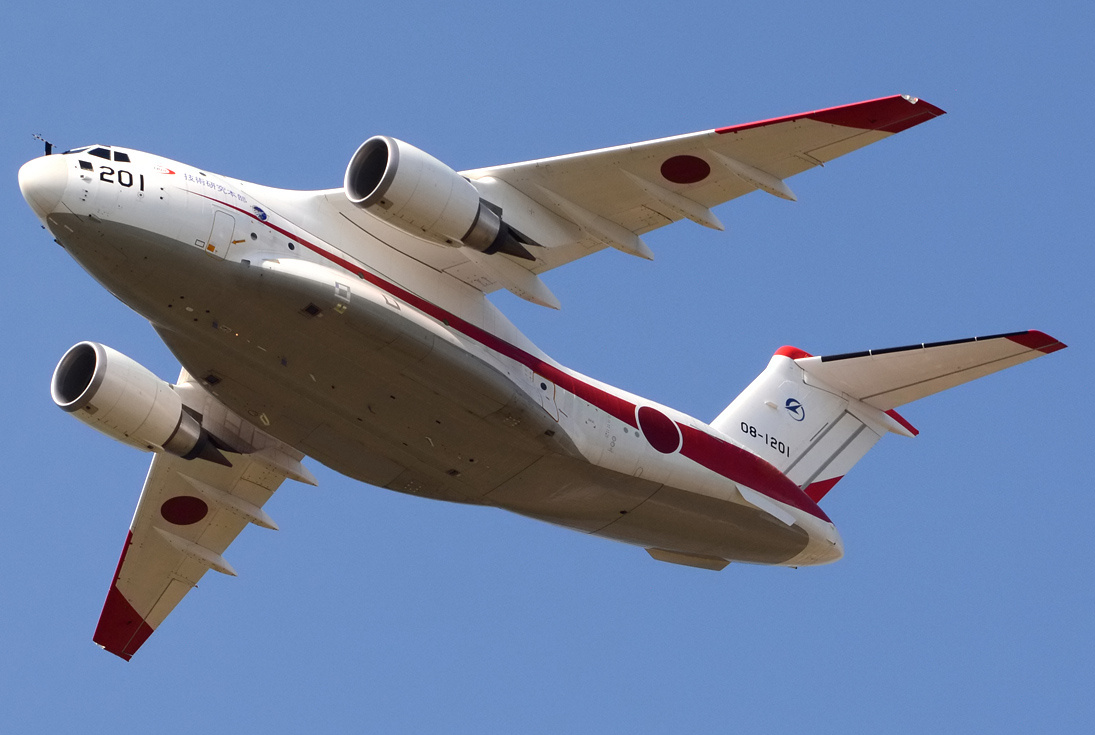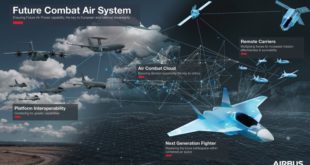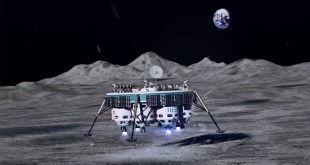Military transport aircraft, or military cargo aircraft, play a critical role in supporting military operations by airlifting troops, weapons, and essential equipment across the globe. These aircraft provide military commanders with the flexibility to deploy forces rapidly, sustain them during operations, and ensure their swift redeployment. Without the capability to airlift soldiers, vehicles, ammunition, food, fuel, communications equipment, and other vital supplies, a military’s ability to project power and maintain a global presence would be severely compromised. Beyond combat missions, these aircraft also play a crucial role in humanitarian efforts, delivering aid to areas hit by natural disasters, famine, or conflicts.
In the realm of military logistics, the ability to swiftly and efficiently transport troops, equipment, and supplies is crucial to maintaining a strategic advantage. As military operations grow increasingly complex and geographically dispersed, the demand for rapid and reliable airlift capabilities has never been greater. Enter autonomous cargo planes—an emerging technology that promises to revolutionize the way armed forces conduct airlift operations.
Military transport aircraft or military cargo aircraft are used to airlift troops and military equipment to support military operations. Air transport provides a military commander with the capability to deploy, employ and re-deploy forces and equipment quickly and over considerable distances, sustain those forces and support effective application of their military effort. Without transport planes delivering soldiers, weapons, trucks, food, fuel, communications equipment, and many other things to a war theater, a military’s ability to fight anywhere on Earth is compromised. In addition, airlift provides the military with a humanitarian capability to aid areas hit by famine
or natural disasters or blockaded by war or enemies.
Types of Air Transport Operations
Air transport operations encompass a variety of missions that are crucial to military and humanitarian efforts. These operations can be broadly categorized into several types, each with distinct objectives and requirements:
1. Air Logistic Operations
Air Logistic Operations involve tasks that support the deployment, distribution, and recovery of personnel, equipment, and supplies. These operations are not limited to airborne missions and can include the extraction of non-combatants. They often involve scheduled air transport services designed for the programmed movement of aid, support personnel, and essential supplies. The primary goal of these operations is to ensure that resources are effectively delivered to where they are needed most.
2. Airborne Operations
Airborne operations are designed to move combat forces and their logistical support directly to a strategic or tactical objective. These operations leverage air-delivered combat power to seize vital ground or installations, often through airdrop or airlanding methods. Objectives can include ports of entry, airfields, and key infrastructure. Unlike air logistic operations, airborne operations are integral to joint campaign plans and can have significant operational or strategic impact. Although they carry high risks, the potential gains make airborne operations a valuable asset in military strategy.
3. Aeromedical and Non-Combatant Evacuation Operations (NEO)
Aeromedical Evacuation involves transporting patients to and between medical treatment facilities via air, ensuring they receive medical supervision throughout the journey. Non-Combatant Evacuation Operations (NEO) are missions designed to safely evacuate civilians from areas of danger or conflict, often under challenging and rapidly changing conditions. These operations are critical for preserving human life and maintaining morale in crisis situations.
4. Special Air Operations (SAO)
Special Air Operations support specialized missions, often conducted during peace, crisis, and conflict. These operations may involve both combat and non-combat tasks, including the deployment, infiltration, support, and extraction of Special Forces. SAO can be integrated with other joint operations or executed autonomously, regardless of the prevailing combat conditions. Due to the unique and challenging environments in which SAO are conducted, these missions require specialized aircraft, equipment, and training tailored to the specific demands of each operation. Both fixed-wing and rotary-wing aircraft, often modified for specific tasks, are employed in these operations.
Contingency Response Operations (CRO) Tasks
Contingency Response Operations (CRO) encompass a wide range of military activities that support national objectives, deter conflict, and provide humanitarian aid. CRO tasks are designed to operate across the spectrum of peace, conflict, and post-conflict environments. Key CRO tasks include:
- Peace Support Operations (PSO): Encompasses peacekeeping, peace enforcement, conflict prevention, peacemaking, peacebuilding, and humanitarian relief.
- Humanitarian Operations: Independent tasks focused on providing aid and relief in crisis situations.
- Disaster Relief: Coordinating efforts to respond to natural or man-made disasters.
- Search and Rescue Operations (SAR): Locating and rescuing individuals in distress, whether in combat or civilian scenarios.
- Non-Combatant Evacuation Operations (NEO): Conducting evacuations in both permissive and non-permissive environments.
- Military Aid/Support to Civil Authorities: Providing assistance to civilian authorities during emergencies or crises.
- Enforcement of Sanctions: Implementing international sanctions through military means.
Air Transport Operations in CRO
Air Transport (AT) operations are a critical component of Contingency Response Operations. They play a key role in quickly moving large numbers of troops, equipment, and supplies into crisis areas, demonstrating political commitment and building trust. AT operations also facilitate the movement of key personnel, including mediators, observers, aid workers, and security forces, into areas requiring relief or support.
However, AT assets are particularly vulnerable to various threats, including sabotage, small arms fire, mortars, artillery, and surface-to-air missiles (SAMs). To mitigate these risks, AT operations often require self-defense aids, minimal ground time, and the ability to operate in challenging environments, including short-field performance, night operations, and adverse weather conditions. These measures help reduce vulnerability and ensure the success of air transport missions in complex and hostile environments.
Military air transport operations can be classified into several categories, each tailored to specific mission requirements:
- Air Logistic Operations: These operations involve deploying, distributing, and recovering personnel, equipment, and supplies. They include the extraction of non-combatants and scheduled transport services, often supporting both military and humanitarian missions.
- Airborne Operations: These high-risk missions involve delivering combat forces and their logistical support directly to objectives, often using airdrop or airlanding techniques. The strategic significance of airborne operations can be profound, offering the ability to seize key terrain or infrastructure in enemy territory.
- Aeromedical Evacuation and Non-Combatant Evacuation Operations (NEO): Aeromedical evacuation involves the transport of patients under medical supervision, while NEOs focus on safely extracting civilians from conflict zones, often under hostile conditions.
- Special Air Operations (SAO): These operations support special forces and are conducted in challenging environments, requiring specially designed or modified aircraft. SAO missions are critical during peace, crisis, and conflict, often involving the infiltration, exfiltration, and support of special operations forces.
- Crisis Response Operations (CRO): CRO encompasses a wide range of military and humanitarian missions, from peacekeeping and disaster relief to search and rescue operations. Air transport plays a crucial role in these missions, demonstrating political commitment and providing rapid deployment of resources and personnel.
Types of Military Transport Aircraft and Their Roles
Military transport aircraft can be broadly categorized into fixed-wing and rotary-wing types. Fixed-wing aircraft are often divided based on their range and payload capacity into strategic airlift and tactical airlift categories. These aircraft can operate from both well-developed and austere airfields, making them versatile tools for global military logistics.
Military cargo aircraft or transport aircraft are typically fixed wing and rotary wing aircraft that are used to carry troops, weapons, and other military equipment to any area of military operations across the world.
Transport aircraft can be used for both strategic and tactical missions, and are often diverted to civil emergency relief missions. Strategic air transport involves the intertheatre movement of personnel and equipment. It may be augmented by the use of civil charter aircraft. This is particularly important for the carriage of passengers and outsized cargo. Air transport is a national responsibility. Tactical air transport provides the intra-theatre movement and delivery of personnel and equipment.
Fixed-Wing Transport Aircraft:
Fixed-wing transport aeroplanes are defined in terms of their range capability as strategic airlift or tactical airlift to reflect the needs of the land forces which they most often support. These roughly correspond to the commercial flight length distinctions: Eurocontrol defines short-haul routes as shorter than 1,500 km (810 nmi), long-haul routes as longer than 4,000 km (2,200 nmi) and medium-haul between.
- Strategic Airlift: These aircraft are designed for long-range missions, carrying large quantities of cargo, including oversized and heavy equipment, across continents. They play a vital role in inter-theatre movements, enabling the transport of personnel and equipment from home bases to distant operational theatres.
- Tactical Airlift: Tactical airlift aircraft are optimized for shorter-range missions, often delivering troops and supplies directly to combat zones. These aircraft are capable of operating from shorter, less-developed runways, providing essential support to frontline units.
Rotary-Wing Transport Aircraft:
- Assault Helicopters: These smaller helicopters are designed for rapid deployment of infantry squads and their equipment, often directly into contested areas. They are usually armed for self-defense and are essential for the initial phases of airborne assaults.
- Medium and Heavy-Lift Helicopters: Medium helicopters transport larger units, light vehicles, or artillery, often to reinforce initial assault waves. Heavy-lift helicopters, like the CH-47 Chinook, can move entire platoons or small armored vehicles, providing critical mobility in rugged or inaccessible terrain.
Some military transport aircraft perform multi-role duties, such as aerial refueling, as well as rescue missions, and tactical, operational, and strategic airlifts onto unprepared runways.
The Largest Military Cargo Aircraft: Giants of the Sky
The world’s largest military cargo aircraft, such as the Lockheed C-5M Super Galaxy and the Antonov An-124 Ruslan, have long been the backbone of military airlift operations. These colossal planes can transport everything from troops and vehicles to helicopters and even tanks. Their immense cargo capacity and range make them indispensable assets for global military logistics.
Lockheed C-5M Super Galaxy
The Lockheed C-5M Super Galaxy is one of the largest military transport aircraft globally, operated primarily by the United States Air Force (USAF). As an upgraded version of the original C-5 Galaxy, the C-5M features significant improvements in reliability, maintainability, and operational performance. Its massive payload capacity of 129,274 kg (approximately 285,000 pounds) allows it to carry oversized cargo such as helicopters, tanks, and large equipment that few other aircraft can accommodate. The C-5M’s range and ability to refuel mid-flight make it a critical asset for U.S. strategic airlift, enabling the rapid deployment of military assets anywhere in the world. The aircraft’s distinctive nose opens upward, and its aft cargo door can also be opened, allowing for simultaneous loading and unloading, which is particularly beneficial in high-tempo operations.

Boeing C-17 Globemaster III
The Boeing C-17 Globemaster III is celebrated for its versatility and adaptability in various military operations. This aircraft is a key component of the U.S. and several other nations’ airlift capabilities. The C-17 can carry a wide range of cargo, including M1A2 Abrams tanks, helicopters such as the AH-64 Apache, and numerous palletized supplies. With a payload capacity of 76.6 tons, it can transport equipment to remote and austere locations. Its ability to operate from short and unpaved runways gives it a significant advantage in tactical airlift missions, making it indispensable in both combat and humanitarian operations. The C-17’s design also allows it to conduct rapid strategic airlifts and perform tactical missions such as medical evacuation and airdrops, underscoring its role as a workhorse in military logistics.

Antonov An-124 Ruslan
The Antonov An-124 Ruslan, known by its NATO designation “Condor,” is the largest production military transport aircraft in the world. Developed by the Ukrainian company Antonov, the An-124 has a maximum payload capacity of 150 tons, which allows it to transport virtually any type of military equipment, including heavy armored vehicles, helicopters, and other oversized cargo. The aircraft is a cornerstone of Russia’s strategic airlift capabilities and is also used by various countries and commercial operators for transporting large industrial machinery and humanitarian aid. The An-124’s robust design enables it to operate from rough airstrips and carry out long-haul flights, making it an essential asset in global military logistics and strategic air transport.

Airbus A400M Atlas
The Airbus A400M Atlas is a modern European military transport aircraft designed to fulfill both strategic and tactical roles. Developed by Airbus Defence and Space, the A400M is equipped to carry out a wide range of missions, including the transportation of troops, vehicles, and supplies, as well as medical evacuation and aerial refueling. With a payload capacity of 37 tons, the A400M can transport two 8×8 armored vehicles or other similarly large cargo. Its ability to take off and land on semi-prepared airfields, combined with its advanced avionics and defensive systems, provides operational flexibility in various combat and humanitarian scenarios. The A400M’s versatility has made it a vital component of the air forces of several European nations, as well as other international operators.

Lockheed Martin C-130 Hercules
The Lockheed Martin C-130 Hercules is one of the most widely used military transport aircraft in the world, renowned for its ruggedness and versatility. Since its introduction in the 1950s, the C-130 and its numerous variants have been a staple in military operations for countries across the globe. The aircraft is capable of performing a wide range of missions, including troop transport, cargo airlift, medical evacuation, and even aerial firefighting. With a payload capacity of up to 20 tons, the C-130J Super Hercules, a modernized version, can carry troops, vehicles, and other equipment, often in austere environments. Its ability to operate from unpaved runways and its relatively short takeoff and landing capabilities make the C-130 an invaluable asset in both tactical and strategic airlift operations.

Antonov An-225 Mriya
Although not included in the original list, it’s worth mentioning the Antonov An-225 Mriya, which, though not a dedicated military aircraft, holds the title of the largest aircraft in the world. With a maximum payload capacity of 250 tons, the An-225 was originally designed to transport the Soviet Union’s space shuttles. Its incredible size and payload capacity have made it a valuable asset for transporting extremely large or heavy cargo that no other aircraft can carry. While it is not used in military operations in the same way as the An-124, its unique capabilities have made it a vital tool in both military logistics and global commercial transport.
Ilyushin Il-76
The Ilyushin Il-76, known by its NATO designation “Candid,” is a Soviet-era four-engine heavy transport aircraft that has become a mainstay in the air forces of Russia and several other countries. The Il-76 has a maximum payload capacity of 50 tons and is designed to operate in some of the harshest conditions, including Siberia and the Arctic. It can take off from short and unpaved runways, making it suitable for transporting heavy vehicles and machinery to remote and underdeveloped regions. The Il-76 has been widely used in both military and humanitarian missions, including disaster relief and the delivery of aid to conflict zones.
Kawasaki C-2
The Kawasaki C-2 is a new generation, medium-range military transport aircraft developed by Japan’s Kawasaki Heavy Industries for the Japan Air Self-Defense Force (JASDF). With a maximum payload capacity of 37.6 tons, the C-2 offers a significant improvement over its predecessor, the C-1, and can carry a variety of cargo, including troops, vehicles, and large equipment. The C-2’s design emphasizes high-speed and long-range capabilities, allowing it to operate efficiently across the vast distances of the Asia-Pacific region. Its advanced avionics and defensive systems make it a versatile platform for both tactical and strategic missions, and it has been designed to operate from semi-prepared airfields, adding to its operational flexibility.
These aircraft represent the pinnacle of military airlift capabilities, each designed to meet the demanding needs of modern warfare and humanitarian missions. Their ability to transport troops, equipment, and supplies quickly and efficiently is crucial to the success of military operations worldwide.

Vulnerabilities and Challenges
Military transport aircraft face significant vulnerabilities, particularly in hostile environments. They are susceptible to threats such as sabotage, small arms fire, and surface-to-air missiles (SAMs). To mitigate these risks, modern transport aircraft are equipped with self-defense systems and are designed for quick turnaround times, short-field performance, and operations in poor weather conditions. Their ability to operate from unprepared airfields and during night-time missions further enhances their survivability and operational effectiveness.
The Rise of Autonomous Cargo Planes
While traditional cargo planes have served the military well, the advent of autonomous cargo aircraft is set to redefine airlift operations. These unmanned planes offer several key advantages that could transform military logistics:
- Increased Efficiency and Speed: Autonomous cargo planes can operate around the clock without the need for crew rest, reducing downtime and increasing the speed of operations. They can be deployed in swarms, providing rapid and scalable airlift capabilities to meet the demands of high-intensity conflict zones.
- Enhanced Safety: Autonomous systems can navigate through hazardous environments, such as contested airspace or areas with extreme weather conditions, without risking human lives. Advanced sensors and AI-driven decision-making enable these aircraft to avoid threats and ensure the safe delivery of cargo.
- Reduced Operational Costs: Eliminating the need for a crew significantly reduces the operational costs associated with long-range airlift missions. Autonomous cargo planes also require less maintenance, as they can be designed with simpler systems optimized for durability and reliability.
Supporting Military Operations
Autonomous cargo planes are poised to play a pivotal role in future military operations, particularly in scenarios where rapid deployment and logistical support are critical. Whether airlifting troops, transporting military equipment, or delivering humanitarian aid, these unmanned aircraft offer unparalleled flexibility and responsiveness.
- Airlifting Troops: In fast-paced combat scenarios, the ability to quickly move large numbers of troops to the front lines can be a game-changer. Autonomous cargo planes can be deployed to airlift personnel to remote or forward operating bases, ensuring that military forces are positioned where they are needed most.
- Transporting Military Equipment: Autonomous cargo planes are ideal for transporting a wide range of military equipment, from light vehicles and artillery to advanced weapon systems and drones. Their ability to operate in challenging environments makes them a valuable asset for resupplying units in austere or contested areas.
- Humanitarian Missions: In addition to supporting combat operations, autonomous cargo planes can be used for humanitarian missions, such as delivering food, water, and medical supplies to disaster-stricken regions. Their ability to operate independently and reach inaccessible areas makes them an invaluable tool for crisis response.
Challenges and Future Prospects
While the potential of autonomous cargo planes is immense, there are still challenges to overcome before they can be fully integrated into military operations. Issues such as cybersecurity, air traffic management, and regulatory approval must be addressed to ensure the safe and effective deployment of these systems.
Despite these challenges, the future of autonomous cargo planes is bright. As technology continues to advance, we can expect to see these unmanned giants of the sky playing an increasingly important role in military logistics, enabling faster, safer, and more efficient airlift operations across the globe.
In conclusion, the integration of autonomous cargo planes into military logistics represents a significant leap forward in airlift capabilities. By harnessing the power of automation, armed forces can enhance their operational readiness, reduce costs, and improve the safety and efficiency of their logistics networks. The era of autonomous airlift is on the horizon, and it promises to redefine the future of military operations.
The Future of Military Transport Aircraft
The military transport aircraft market is poised for growth, driven by the need to replace aging fleets and the increasing demand for advanced, versatile aircraft. Nations like China, India, and the United States are leading the way in developing and acquiring new transport aircraft with enhanced capabilities. For instance, China’s Y-20 aircraft, powered by domestically developed engines, represents a significant leap in the country’s military airlift capacity.
As the global security environment evolves, military transport aircraft will continue to be a critical component of military strategy, enabling rapid deployment, sustained operations, and humanitarian relief efforts. The integration of advanced technologies, including autonomous systems and enhanced self-defense capabilities, will further strengthen their role in future military operations.
References and Resources also include:
http://www.military-today.com/aircraft/top_10_cargo_aircraft.htm
Major Szabolcs Lőrinczy AIR TRANSPORT OPERATIONS AND ITS SUPPORT DURING CRISIS RESPOND OPERATIONS (CRO)
 International Defense Security & Technology Your trusted Source for News, Research and Analysis
International Defense Security & Technology Your trusted Source for News, Research and Analysis

